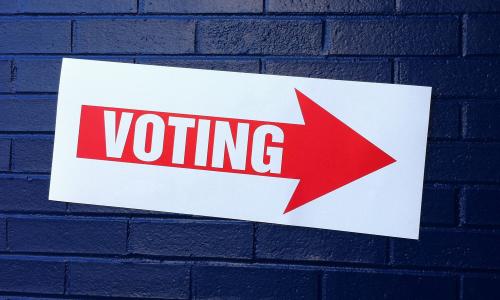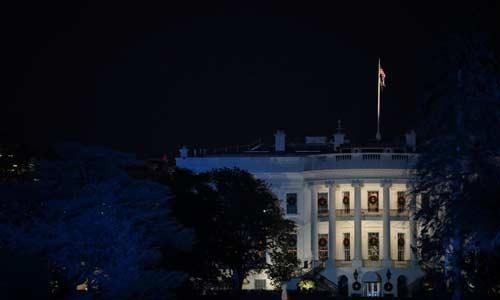Table of Contents
Whether it’s protection from chemical hazards, resilience to climate change impacts, or a food system that is accessible and affordable, communities across the country are working to improve health and safety. We can all benefit when all members of the community—scientists, policymakers, and residents alike—have access to the best available science and can break down barriers to shape decisions.
Our September 26, 2015 Lewis M. Branscomb Forum, "Community Connections," explored ways to overcome barriers to collaboration and make scientist engagement more effective. Participants learned about new ways for scientists, leaders, and the public to work together, and left with strategies and tangible advice to develop (or improve) connections between scientists and communities.
The town hall in Houston, TX hosted a diverse audience of community groups, science organizations, technical specialists, residents, and elected officials. Participants learned and shared stories from their own experiences of connecting science and community around a range of issues. The first half of the event took a broader look at what it means to connect communities and science. The second part focused on collaborations among Houston’s community and science experts to address local issues facing Houston.
From our blog: stories of scientists and communities working together
Community-based Participatory Science is Changing the Way Research Happens—and What Happens Next
Judy Robinson, Co-founder and Director of Coming Clean
September 9, 2015
People want science to improve their lives directly. They want progress faster, and a more democratic, participatory role in deciding what needs to change and which research questions will fuel a movement for those changes. This is because one thing about science hasn’t changed over time: proof alone changes almost nothing. Read more >
Michael W. Burns, Senior Advisor for the Regional Administrator, Environmental Protection Agency, Region 4
August 24, 2015
What if there was a federal program that connected universities and underserved communities to work together to address critical issues? Would you be surprised if I told you that program already existed? Read more >
Why Community-Based Research Matters to Science and People
Lauren Richter, Doctoral Student, Department of Sociology, Northeastern University
August 18, 2015
When and how does research serve people? When and how does community-based participatory research improve the “rigor, relevance and reach” of science itself? Today we are witnessing an increase in collaborative research projects that seek to address environmental and environmental health issues in polluted communities. While an academic scientist may have access to labs and facilities, a community living near an industrial-scale hog farm in North Carolina may have unique insights about the types of exposures and acute and chronic health impacts they routinely feel and observe. Read more >
Community Connections: Scientist-Citizens Have a Critical Role to Play
Andrew Rosenberg, director, Center for Science and Democracy
August 10, 2015
Many community organizations struggle to be heard in our noisy democracy. Even on critical issues such as air and water quality, health hazards from chemicals, local food policy, environmental justice for disadvantaged communities, and the rising challenges of global warming, their voices and needs are often drowned out by those who argue that addressing public health, safety and the environment is too expensive. Read more >
Preventing Asthma: Searching “Upstream” for the Evidence
by Felix Aguilar, MD, Clinical Assistant Professor of Family Medicine, University of Southern California Keck School of Medicine, Los Angeles
December 9, 2014
The buzzing sound of a hand-held nebulizer has become background noise at my clinic. It sounds like a hive of bees moving noisily. Everyday children and adults in South Los Angeles get asthma treatments at community clinics because of exacerbations, also known as asthma attacks. I am a family physician with over a decade of work at community clinics in the poorest areas of Los Angeles. Read more >
Engaging Scientists in Environmental Justice Communities
Juan Reynosa, Environmental Justice Organizer, SouthWest Organizing Project, Albuquerque, NM
October 17, 2014
The environmental movement in this country went through a major culture shift in the 1980s, when organizers of color expanded their vision and redefined their goals. Many communities of color felt that the environmental movement prioritized wildlife conservation over the protection of low-income communities, which usually experience the brunt of environmental injustices. Read more >
Doing Science that Matters: Engaging with Communities in Collaborative Scientific Research
Megan Adams, Ph.D. student and Hakai-Raincoast scholar, Victoria, BC
October 3, 2014
I should have known I would become an ecologist. As a child, I always seemed to catch a salamander while waiting for the school bus, or bring home precious flowers to press through the seasons. I could stare from the bus window out into the grasslands, which transitioned into foothills to give rise to the Rocky Mountains, and imagine infinite ecosystems beyond. My passion as a naturalist and ecologist flourished as a biology undergraduate on the coast of British Columbia, Canada. Read more >
Case studies: scientist/community partnerships
We've highlighted stories of successful collaborations between scientific experts and community groups, ranging from managing forests to mitigate wildfire risks in Colorado to assessing the environmental, public health and economic impacts of a mining disaster in the Philippines. Participants explain how the partnerships began, the challenges they faced, what they achieved, and the lessons they learned.
Food Equity and Justice
Communities all over the United States are looking for ways to ensure that healthy food is available and affordable for all. Evidence shows that health effects of poor food access, affordability, and availability disproportionately affect communities of color, low-income communities, and tribal communities. The Center for Science and Democracy seeks to support local food policy efforts by strengthening access to scientists and public health professionals. This project followed the Science, Democracy, and a Healthy Food Policy forum that UCS organized in May 2014, where local leaders raised concerns about addressing food inequities a Minnesota’s most disadvantaged communities.
Untreated Wastewater for Crops
An environmental scientist and engineer living in Mexico, asked by a local environmental group to assess the health of a lake in San Miguel de Allende, discovered that more than half of local wastewater was being diverted before sewage treatment, much of it to irrigate surrounding crop fields. This discovery led to a project involving multiple community stakeholders to gather information about health and environmental impacts, document their findings, and advocate for solutions with local and federal authorities.
Environmental Justice and Corporate Accountability—the Philippine Experience
This project, a partnership between AGHAM (Advocates of Science and Technology for the People) and community organizations, conducted an environmental investigation on a major mining disaster that destroyed a river system in Benguet province. The project engaged a multi-disciplinary team to integrate the knowledge of local communities with the quantifying expertise of scientists and technologists. The group's report revealed severe environmental, health, economic and political impacts of the disaster on local communities, prompting the Department of Environmental and Natural Resources Management to suspend the company's operations until the breach was resolved.
Public-Led Urban Environmental Restoration
Environmental responsibility and sustainability is a great challenge for future generations. Through this grant project, funded by the American Alliance of Museums with support from the US Department of State, youth from the Patricia and Phillip Frost Museum of Science in Miami, Florida and the Natural History Museum of Jamaica in Greater Portmore, Jamaica took action to restore urban habitats, while interacting with their international counterparts. This action and interaction built a community of environmentally active young residents who were invited to take ownership of positive change in their communities.
The History of the San Juan Headwaters Forest Health Partnership
A 2009 meeting in Pagosa Springs, CO highlighted the need to include all stakeholders in forest management activities, leading to the formation of the San Juan Headwaters Forest Health Partnership, which describes its mission as "pro‐active, collaborative approaches to improving the health and long‐term resilience of communities by addressing forest and watershed health." By bringing land managers, businesses, community members, and environmental groups together to discuss project needs, locations, goals, and impacts before the projects are initiated, San Juan Headwaters has been able to address concerns and build support for projects that are determined to be relevant and important. The group is locally built, is driven by the local communities, and looks to advance the local economy and health.
Community Air Monitoring in Watsonville, California
Scientists partnered with members of a statewide coalition for a community air monitoring project to collect scientific evidence of pesticide drift in areas where people live, work, and play. This data provided information to community members about pesticide use in their community, and provided them with new ways to engage on issues in their community.
Forum advisory committee
The Center for Science and Democracy has brought together a wide range of perspectives to help inform the creation of this forum, including community groups, science organizations, technical specialists, the public, and elected officials. We are grateful for their work with us, and would like to particularly recognize the members of the forum advisory committee for their guidance and many contributions:
Dr. David Chavis, Principal Associate/CEO of Community Science
Dr. Megan Latshaw, Environmental Health Director at the Association of Public Health Laboratories
Judith (Judy) Robinson, Executive Director of Coming Clean, Inc
Dr. Rajul (Raj) Pandya, Director, Thriving Earth Exchange at the American Geophysical Union (AGU)
Juan Parras, Director, Texas Environmental Justice Advocacy Services (TEJAS)
Dr. Melanie Roberts, founder and director of Emerging Leaders in Science & Society (ELISS), at the American Association for the Advancement of Science (AAAS).
Michele Roberts, National co-coordinator of the Environmental Justice Health Alliance for Chemical Policy Reform (EJHA).
Cynthia Robinson, director of the American Association for the Advancement of Science (AAAS), Science and Technology Policy Fellowships
Adrian Shelley, Director, Air Alliance Houston
Dr. Natasha Udu-gama, Director of Community Partnerships for Thriving Earth Exchange at the American Geophysical Union (AGU).
Community connections survey summary
To further our understanding of the challenges and best practices of connecting scientists and community groups, we asked researchers, community members, academics and local leaders to fill out a survey about their scientist-community collaborations. Questions addressed the impacts, resources, and processes of the partnerships, as well as lessons they would suggest applying to future projects. This information has helped shape the conversations we’ll be having at the town hall in Houston, and allowed us to identify a variety of different models of scientist-community partnerships.



